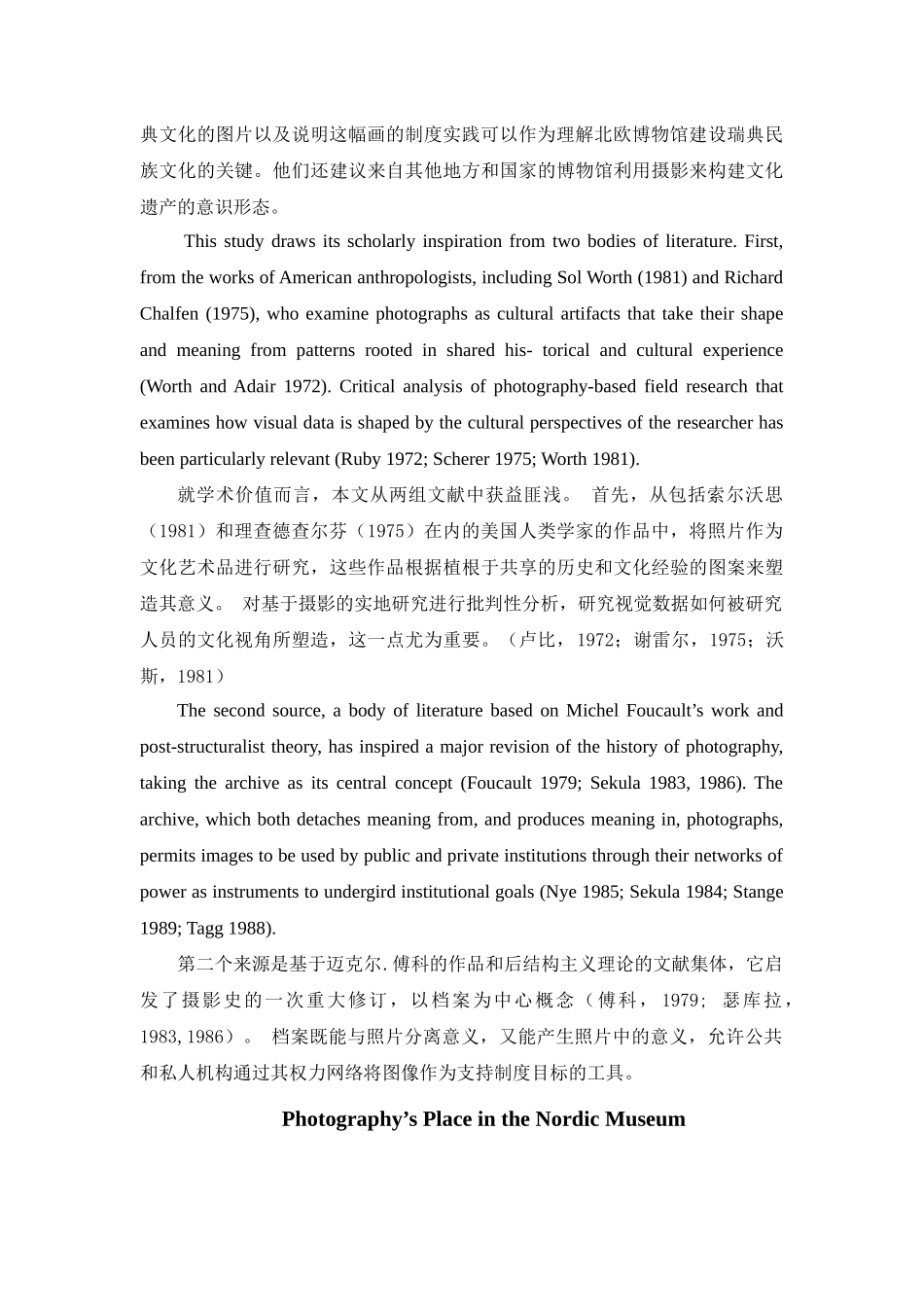Picturing Our Past An Archive Constructs a National Culture描绘我们过去的档案,建设民族文化PHOTOGRAPHY’S POSITION IN WESTERN CULTURE is embedded in an ideology of representation that regards it as simultaneously copying and constructing the world that it pictures. Photographic practice, which includes not only the taking of pictures, but also how photographs are looked at, thought about, saved, used, and re-used, illustrates the ways we resolve this apparent para- dox. State institutions that rely on keeping records produce photographs that can be used as documents as replicas of the world with all apparent disinterest in how their pictorial records construct the objects and arena of the institutional gaze. Yet a closer examination of the routines an institution employs in gathering, selecting, and preserving its records reveals strategies of representation and conservation that create and perpetuate the world within the institutional boundaries, with implications reaching beyond its specific time and place. The photographs thus are joined in a mutually authenticating discourse that validates the institution’s picture of its sphere at the same time that the photographs’ ideological power is increased by their link to the institutional practices that have produced them.在西方文化中,摄影的地位往往被限定在一种表现形式的意识形态中,将其视为同时复制和构建它所拍摄的世界。摄影实践不仅包括拍摄照片,还包括照片的审视,思考,保存,使用和重复使用,这些都说明了我们解决这个明显的障碍的方法。依靠保存记录的国家机构会制作照片,文件作为世界的复制品,对其图像记录如何构建体制凝视的目标和舞台显然不感兴趣。然而,仔细研究一个机构在收集,选择和保存其记录时使用的例程,就会发现代表性和保护的策略,这些策略在机构边界内创造和延续世界,其影响超出了特定的时间和地点。因此,这些照片加入了一个相互认证的话语,在验...


